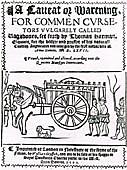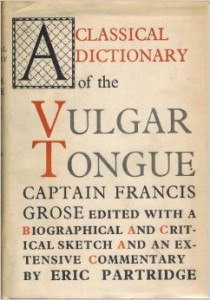Introduction
The cant dictionary soon became a sensation, and its popularity skyrocketed. Over time, it changed from a text intended to educate and protect the reader from crime to a text concerned primarily with entertainment. The chief concern of the publishers of these cant dictionaries was profit, and the cover pages of the dictionaries advertised the renown of their compilers in a similar manner as the New York Times bestselling authors of today.1 In many cases, these compilers were incompetent in terms of being historians of the language, etymologists, definers, grammarians, or proof-readers.2 In other words, the commercialized dictionaries were more concerned with selling and less so with historical or academic integrity or accuracy. As a matter of fact, serious scholars of the time tended to view slang lexicography as an unrewarding area of study, and academics were generally more interested in social aspects of language use.3 In the meantime, amateur lexicographers were mass-producing slang glossaries to meet the demands of a profitable market .4 Long story short: slang dictionaries had become all about the money.
The Caveat of Warening for Commen Cursetors
Published in 1567 by Thomas Harman, the Caveat marked the beginning of a lucrative branch of publishing known as the cant list.5 Cant lists such as the Caveat claimed to contain insider knowledge of the language of criminals, and fed the then-current mass fascination and fear of crime.6 These cant lists were produced primarily as a commercial endeavor, and many were released repeatedly in new editions that were little changed from their previous versions.7
Grose’s Classical Dictionary of the Vulgar Tongue (1785)
Similar to Harman, Grose published his Classical Dictionary with the intention less to educate and more to amuse the reader.8 The dictionary also proves to be a valuable source of information about slang and colloquial language in the eighteenth century.9 One reason for the dictionary’s usefulness as a slang reference is that Grose has included a great deal of information from other cant and slang dictionaries. As he describes in his introduction, Grose uses B.E.’s New Dictionary and the New Canting Dictionary, as sources of material.10 The size of the Classical Dictionary is impressive as well. Grose includes 3,893 entries within his dictionary, and of these entries, 2,127 come from the word-lists of the New Dictionary and the New Canting Dictionary.11
Flash literature: Pierce Egan’s Life in London

http://www.bl.uk/britishlibrary/~/media/bl/global/english-online/collection-item-images/u/n/k/unknown%20life%20m00007%2058.jpg
- Produced in a series of issues, Life in London tells the story of its protagonist Jerry Hawthorn as he is introduced to the excesses of the city by his cousin Corinthian Tom, an upper class man of fashion.12 A major success, Life in London was produced in ever-greater numbers with each issue.13 Importantly, one of the most popular elements of the work is its use and inclusion of metropolitan slang terms or flash, which caught on with members of all levels of society.14 In the case of Life in London, the language was a large contributer to its popularity, and is indicative of a society that was fascinated by the language of those on the edge, and the other side, of the law.
1 Coleman, Julie. A History of Cant and Slang Dictionaries, Volume IV 1937 – 1984. New York: Oxford University Press, 2010. Page 2.
2 Coleman Vol. IV, 2
3 Coleman Vol. IV, 1
4 Coleman Vol. IV, 2
5 Coleman, Julie. A History of Cant and Slang Dictionaries, Volume II 1785 – 1858. New York: Oxford University Press, 2004. Page ix.
6 Coleman Vol. II, ix
7 Coleman Vol. IV, xv
8 Coleman, Vol II, 5
9 Coleman Vol. II 5
10 Coleman Vol. II, 18-19
11 Coleman Vol. II, 19
12. Coleman Vol. II, 154
13 Coleman Vol. II, 156
14 Coleman Vol. II, 156

